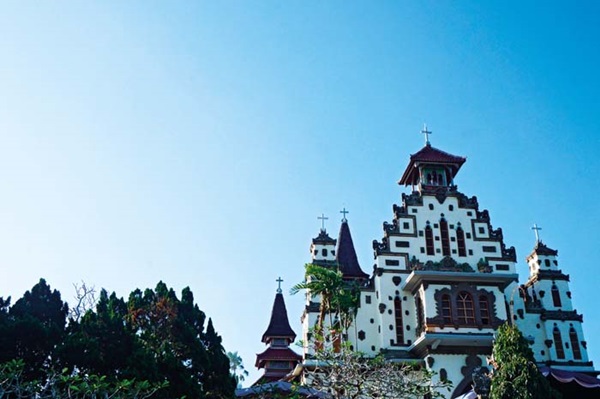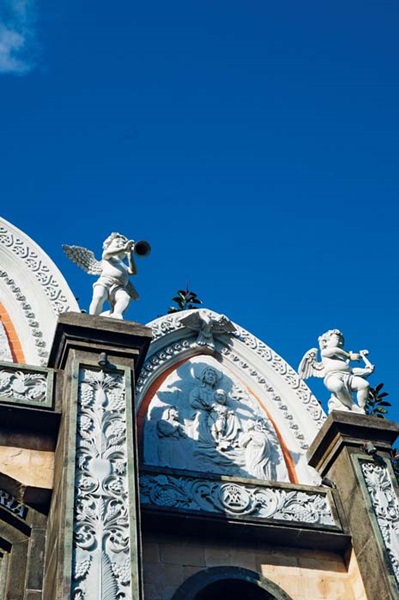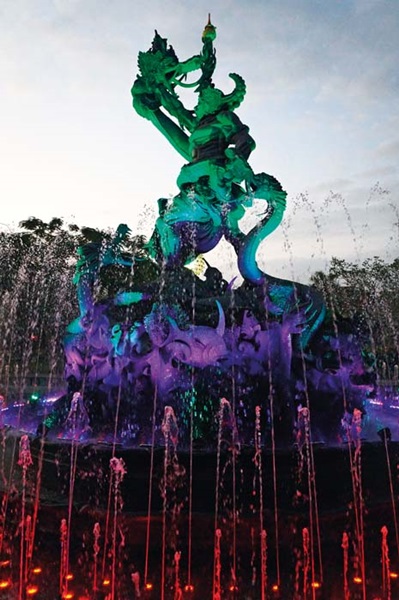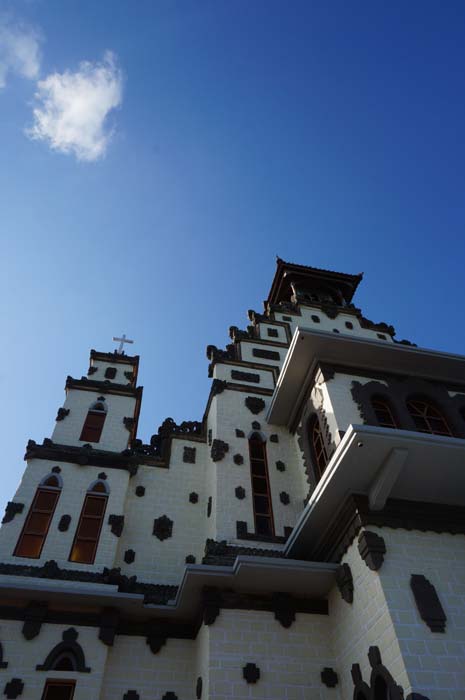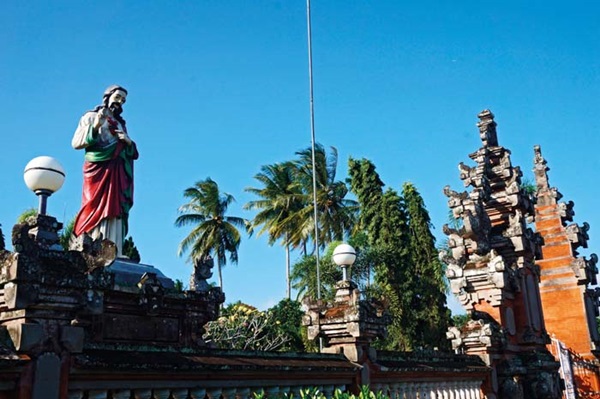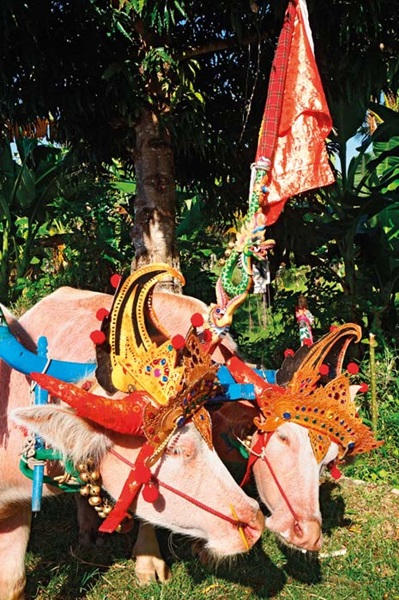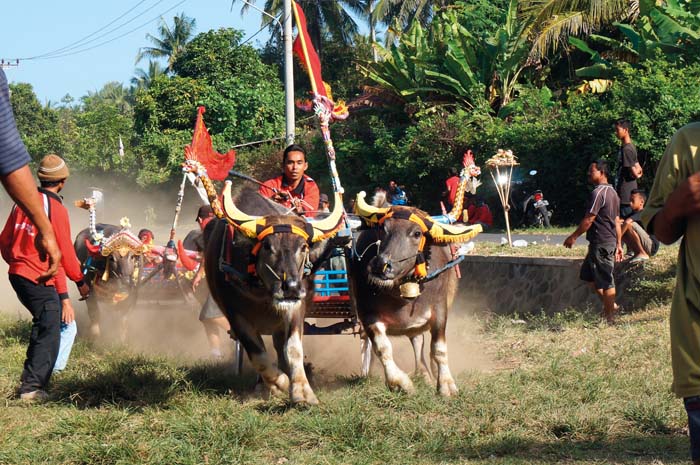
West Bali in general is a place where you can feast your eyes on awe-inspiring landscapes. The enchanting natural beauty that awaits you certainly justifies the long drive. This region is still relatively quiet (unlike its southern counterpart), and to avoid getting lost, bring a map and familiarize yourself ahead of time with two or three of the towns you will encounter along the route.
West Bali is popularly known for its national park, an area that is very varied with rainforest, dry savanna, acacia scrub and lowland forests, as well as more montane forests in the higher centre.
One hundred and sixty species of bird have been recorded in the park, including the near extinct Bali Starling, Bali’s only endemic vertebrate species. Mammals found inside the park include Banteng (bull), Javan Rusa (deer) and Indian Muntjac deer, while Wild Boar and Leopard Cats are both quite common but seldom encountered.
Visitors can access the area from south Bali via two major roads: One on the north coast and the other on the south coast. The road on the north coast is considered quieter and offers en-route attractions such as Singaraja (trade centre of North Bali), Lovina (famous for its sunrise dolphin tour), Banjar (known for its natural hot springs), and Pemuteran (a haven for divers).
Natural beauty takes the larger part on the south coast, with the ocean and terraced rice fields luring passersby to make a stop and snap some shots. You will encounter several busy towns of Tabanan along the way. This southern track is much busier than the one in the north, for it carries the bulk of commercial traffic to and from Java.
Anyway, many know West Bali as a huge area of protected reserve, much of which is completely uninhabited. What many don’t know about is that the area is also a melting pot, for over the centuries migrants from more populated areas in Bali, Java, Madura, and even Sulawesi established communities here.
And so this ethnically, culturally, and geographically diverse area offers many surprises for visitors who make the effort to explore it.
West Bali’s Jembrana region entertains residents and visitors in the know with its water-buffalo race, knows as makepung. The race was introduced about a century ago by migrants from neighbouring Madura. Wearing colourful banners and crowns, their horns decorated and wooden bells tied around their neck, the bulls race down an erratic track.
It’s remarkable to see such docile creatures thunder across the finish line at a speed. The daredevil charioteers often ride standing up on their chariots, twisting the bulls’ tails to give them extra motivation.
Often spotted in sight during makepung (especially during the big competitions), is the region’s unique gamelan jegog, a musical ensemble using only bamboo instruments, some of which are gigantic 3-metre long tubes. Jegog music is very fast, rhythmic, and precise.
The instruments are played in specific sequences and produce some wonderful sounds, while also being visually attractive. Some have likened the resonant sounds to roaring thunder as the music can be heard from quite a distance away.Gamelan jegog accompanies traditional dances such as the tari silat (self-defence dance) and newer ones such as tari makepung (bull race dance).
The capital of Jembrana, Negara, is one of the cleanest areas in Bali. The area’s town square is especially merry in the evenings, when the locals indulge in the many streetside food carts and visitors can marvel at the brilliance of Balinese art through statues placed in the central park. Sunday morning is a “car-free day” around the town square, making it convenient to have a relaxing walk or jog.
Balinese Hindu temples and mosques decorate a good portion of Jembrana, for a lot of them are located by the roadsides. But if you turn inland on the way to the national park to the villages of Belimbingsari and Palasari, you’ll come upon the home of the island’s largest Balinese Christian community with their impressive, distinct, Balinese-designed churches.
The Catholic Palasari is breathtaking with its church set on the village’s town square. The architecture is Gothic but showcases Balinese touches in the spires, which resemble the meru (multiroofed shrine) of a Hindu temple, and features a facade with the same shape as a temple gate.
100 metres away from the church is Goa Maria, cave of Maria, a pilgrimage site overlooking lush greenery of the surrounding hills. The rest of the village offers peacefulness, with swaying palms neatly decorated in on the roadsides in front of the villagers’ home.
The nearby Protestant Belimbingsari, is a religious village and the home to Bali’s biggest Protestant community. Though the church in Belimbingsari is as not as extravagant as the one in Palasari, it really shows an amazing structure with features rendered in a distinctly Balinese style – instead of a church bell, there’s a Balinese kulkul (warning drum) like those in a Hindu temple.
The entrance is through an aling-aling (guard wall) gate, and the carved angels adorning the church look very Balinese.
Going further west to the tip of Bali, you will find a heritage site dedicated to the naval battles between the Indonesian militants and the Dutch army. Called the Monumen Lintas Laut, the site is a convenient stopover with shade from the many big trees on the premises. The main attractions are of course the old tanks and water cannons used in the battles.
Everything is well maintained, and the machinery has been repainted by the friendly Mr. Kadek, guardian of the monument.
Only minutes away from Monumen Lintas Laut is Gilimanuk, the seaport that connects Bali to Java. Upon entering the Gilimanuk area you will be greeted by an intricately designed Balinese dragon gate. The area is mostly occupied by the Javanese Muslims, some of which offer travellers to have a break while having a bite of traditional Indonesian cuisine in their humble eateries.
Of course, divers will find West Bali an amusement through the area’s Menjangan island. The island is surrounded by a coral reef, characterised by deep drop offs of nearly 60 metres and by complex rock formations. These distinctive features have given rise to a great number of large and small caves, festooned with sponge and soft corals and often inhabited by large groupers, moray eels and by young snappers and batfish in the smaller caves.
The sea beds are also rich in large barrel sponges and vibrant sea fans, some of which are truly enormous. Given the depth, the moderate flow of currents and its protection from strong winds, it is common to see tuna, shoals of jack-fish, batfish, angelfish, sea turtles, and on occasion also sharks, especially off the outer corners of the island.
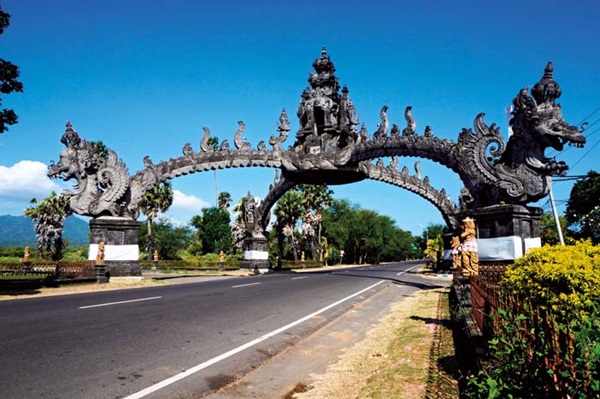
WHERE TO STAY IN WEST BALI
While a day trip to West Bali is possible, we advise that you take your time and explore the area properly. It will give you the time to reflect, appreciate the true values in life and get back to basics, taking time to appreciate the sound of birdsong, the whisper of trees in the ocean breeze and the always surprising delights of marine life which can be witnessed while snorkelling or diving.
NusaBay Menjangan
Formerly Shorea Beach Resort, NusaBay Menjangan is a uniquely Balinese resort that combines contemporary, rustic style with warm and friendly Balinese hospitality. NusaBay Menjangan brings the natural beauty of West Bali National Park to a small number of guests at a time, with only 14 Lanai Cottages and 2 private villas.
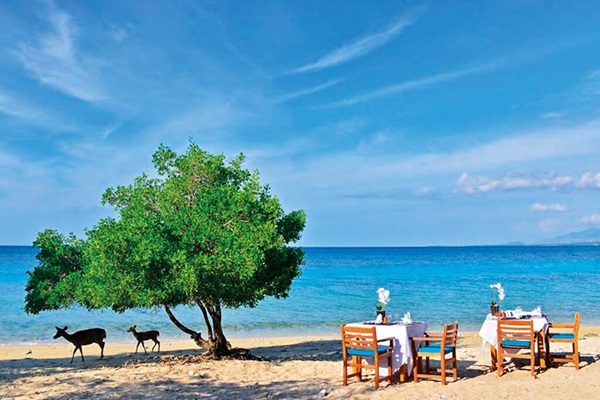
One of the most significant natural treasures in Bali, Menjangan, just a 10-minute boat ride away, offers world famous diving, unspoiled white sand beaches, crystal clear waters and nature at its most pristine. West Bali National Park is a protected national heritage area, and NusaBay Menjangan is the only resort located within the astoundingly beautiful national park’s Prapat Agung peninsula, sharing Menjangan island’s blue ocean and its rich marine life. It is an ultimate getaway for nature lovers, divers and those seeking a serene getaway.
Phone: 0361 484 085
The Menjangan
The Menjangan is a peaceful retreat and the largest resort with 382 hectares within the boundaries of the Bali Barat National Park. The resort offers you the chance to get close to nature and relax in exquisite surroundings.
The idea behind The Menjangan was – like all good ideas – simple: To create the perfect nature retreat located in one of the least-visited but most beautiful parts of the wonderful island of Bali. The resort is relaxed, casual and quiet, with the emphasis very much on restoring calm and simplicity to stressed minds and bodies.
Phone: 0362 94 700

